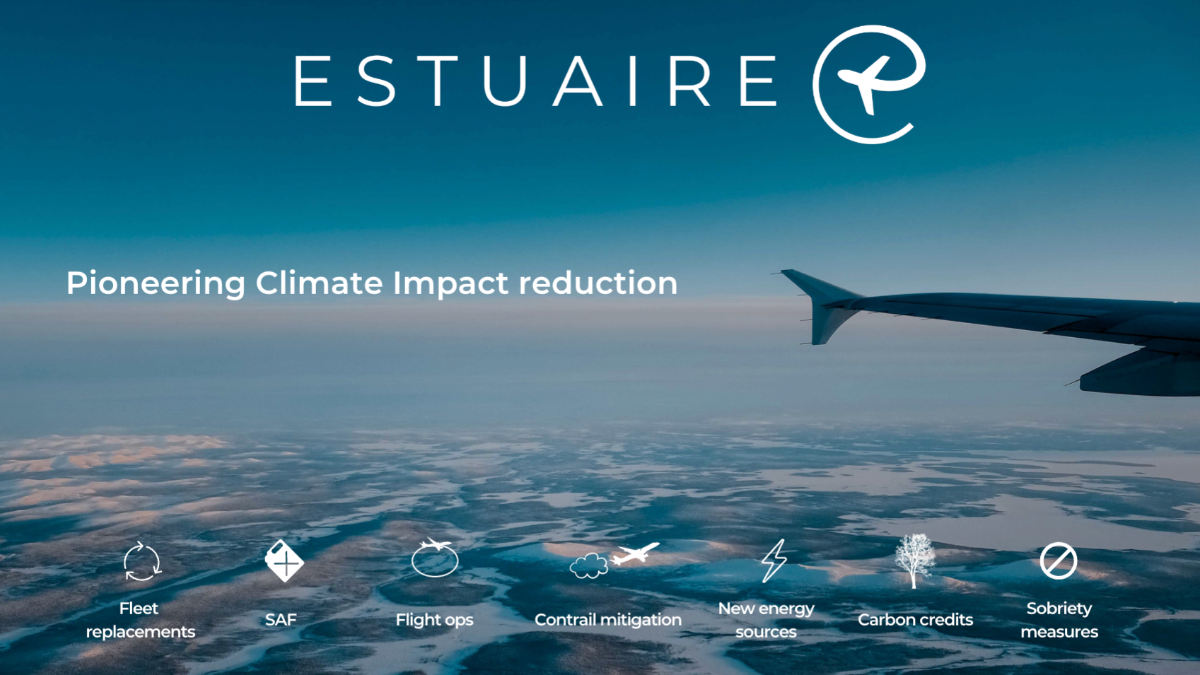There is a lot of talk surrounding emissions reduction and decarbonization in the aviation industry. Many organizations are trying to tackle this challenge by addressing one area or another; whether it be through fuel efficiency, operational efficiency, contrail avoidance or any other form of CO2 mitigation. One such organization is working to mitigate aviation’s climate impact, but they are doing it by analyzing the full life-cycle emissions of any given flight. Through this, they are able to monitor the whole picture surrounding any particular flight and plan accordingly to reduce its impact.
Estuaire, a tech start-up based in France, is revolutionizing the way we measure and analyze flight data. End the Lines was fortunate to sit down with Maxime Meijers, the CEO of Estuaire, and pick his brain about the innovative software he and his team are developing. He recognizes the impact contrails have on the climate and has made contrail measurement and mitigation a priority for their flight-tracking tool. We covered a lot in our chat and have worked together to highlight some of the important points:
- Estuaire collects data from flights all over the world to gauge the life-cycle climate impact of each flight. They then use these analytics to improve flight efficiency and develop flight trajectories which are least likely to form persistent contrails.
- They have partnered with Nordic Aviation Capital to monitor flight emissions and implement their software on a flight-by-flight basis. Along with NAC, they are working with other airlines, financiers, and airports toward applying their analytical tool across the sector.
- This software provides a detailed overview of the emissions of any selected flight, or any selected airline for that matter. It can accurately retrace the broad spectrum of emissions and measure the formation of contrails from these flights.
- Estuaire recently worked with KPMG to provide a deep-dive into the Contrail Opportunity Index by gathering data from flights throughout 2023 to quantify the full effect of contrails; including, which times of day and flight regions are most impactful. The index shows that a few airlines have 80% of their contrail impact concentrated on less than 2% of their flights, making it the go-to topic to immediately address a large share of the climate effect.
- Although it is difficult to distinguish the exact contours of an ISSR, Estuaire intends to combine operational and strategic flight planning to plan for and adjust a flight’s trajectory as needed.
- Maxime’s brother and cofounder, Nicolas, recently discussed the collaboration of different contrail management initiatives at the Contrails Analysis Workshop in London hosted by Google and Breakthrough Energy. They are also planning to attend other conferences this year to sharpen their knowledge and share the progress of their efforts.
- Outside of flight planning, Estuaire is working with groups like SAFRAN to share their data to improve engine modelling to fine tune and mitigate particle emissions.
A growing number of companies are operating in the data analysis and flight planning space – some of which we’ve spoken to – but there is plenty of room for more growth, healthy competition, and collaboration to improve the aviation sector as a whole. Estuaire’s analytical approach is just what the contrail movement needs to remedy some of the uncertainties that have been inhibiting large-scale commitment across the industry. As they continue to share their results and make new connections, their plan to monitor and reduce aircraft emissions will come to fruition.
Estuaire has proven that the technology for contrail mitigation already exists, and it will only improve in the years to come. We are excited by the work that Maxime and Nicolas are doing and look forward to seeing more positive results come from their software. We wish these guys the best as they continue to seek the partnerships and funding that will see Estuaire become a leading player in aviation’s climate mission.

